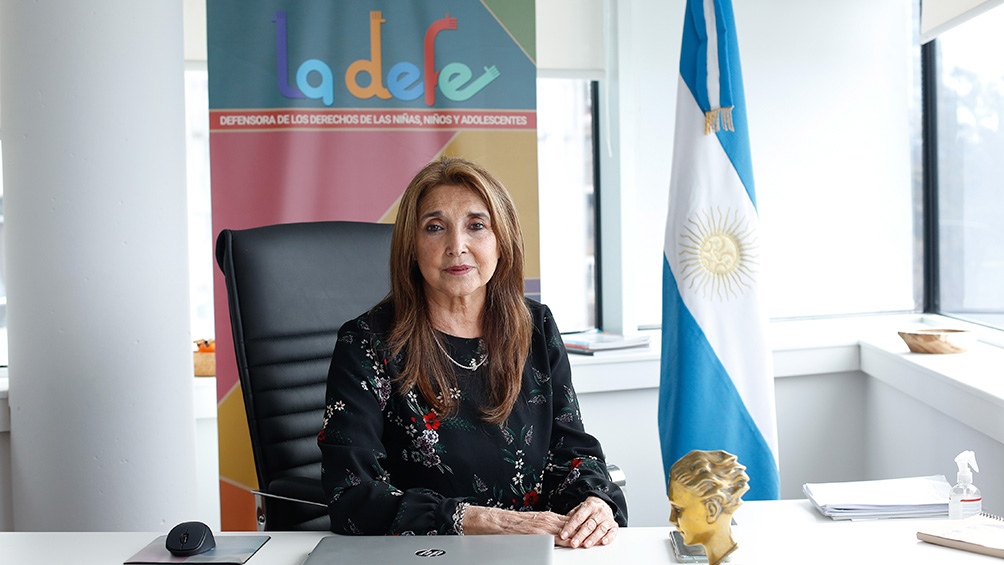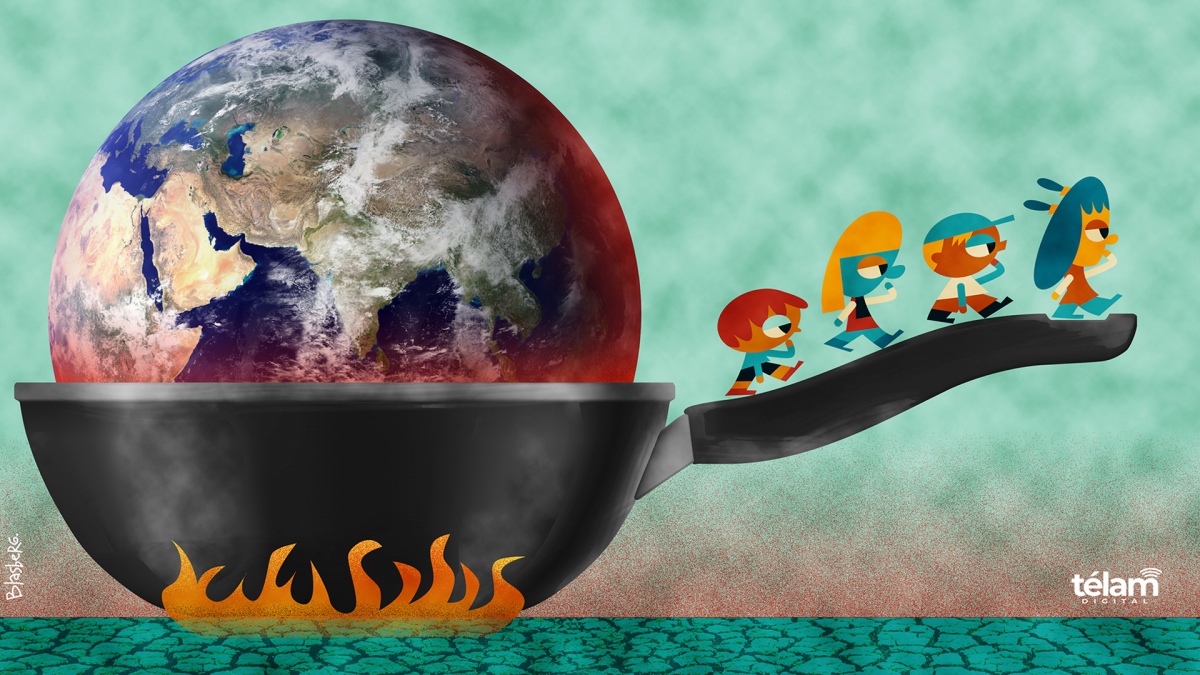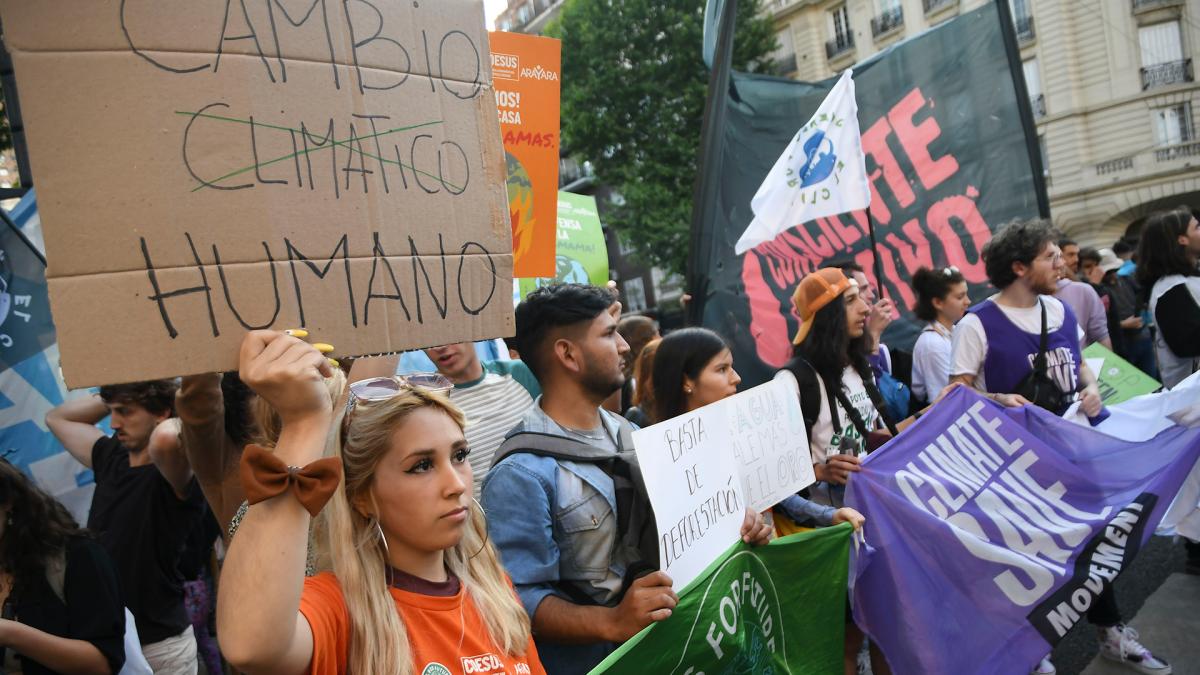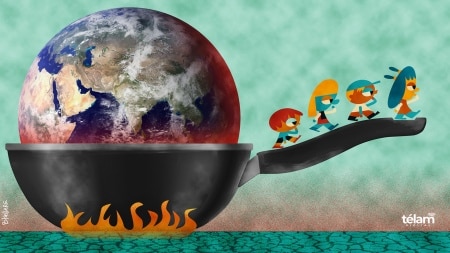 Marisa Graham.
Marisa Graham.
The defender of the Rights of Children and Adolescents, Marisa Graham, pondered that, despite being “doubly vulnerable” to climate change, children “are better able to think in terms of the future beyond their own existence” and considered that their “voices will be very important” in building consensus and proposals to reverse the environmental deterioration that the American countries They will try to formulate from this Tuesday and for three days in the city of Buenos Aires and put it to the consideration of the United Nations.
The San Martín Palace, headquarters of the Argentine Foreign Ministry and one of the national State agencies that sponsors the initiative, will host from this Tuesday until Wednesday the so-called First Regional Consultation for Latin America and the Caribbean for the drafting of General Comment No. 26 -a United Nations document- on the Rights of Children and Adolescents and the Environment, which will focus on how to reverse the impact of climate change on children in the region.
The appointment, the first worldwide in relation to the elaboration of lhe General Observation will bring together government experts appointed by the participating States, multilateral organizations and NGOs. More than 50 children and adolescents representing Argentina, Uruguay, Brazil, the Dominican Republic, Colombia, El Salvador, Peru, Chile, Ecuador and Trinidad and Tobago will also participate.
“For those (States, multilateral organizations and civil society) that have to protect their rights at a global level, it is important first to fulfill the child’s right to be heard because they are the ones who are going to experience the effects of change the most. climate,” Graham emphasized to Télam.
According to Unicef data, 188 million children and adolescents live in Latin America and the Caribbean, who are affected by the environmental damage caused by the loss of biodiversity, pollution and climate change. Among the consequences they must suffer are political and economic instability in their countries of origin, growing inequality, decreased food and water security, and increased threats to health and livelihoods.
Argentina will host the regional meeting. For this reason, Graham received Télam in his office, where he talked about the main axes of the meeting and its importance for the future of children in Latin America and the world.
-Télam: What is this General Comment Number 26 about?
-Marisa Graham: This observation, which should be noted as the first face-to-face consultation to be held in our region, calls the United Nations Committee on the Rights of the Child into consultation by linking it to climate change and how issues that have to do with the environment impact or have adverse effects on the guarantee of the rights of children and adolescents.
-T: What is the relationship between childhood and adolescence with respect to climate change and the environment?
-MG: The impact of environmental change is accentuated in the most vulnerable sectors. And the most vulnerable, due to an intrinsic issue, are the youngest and the youngest along with adolescents. First, because they need someone else to guarantee their rights, but also because children and adolescents both in the Argentine Republic and in the rest of the world have an intersectionality of vulnerabilities.
-T: For example?
-MG: For example, a ten-year-old girl who belongs to an indigenous population and who also does not have access to safe water. There are different intersectionalities that have to do with gender, ethnicity, cultural and socioeconomic situation, among others.

-T: In this sense, how do the risks of climate change impact those who are in vulnerable conditions?
-MG: Climate change puts the entire population and the common home that is the Earth at risk, but those who suffer the most from the consequences of that risk are the most vulnerable, including children and adolescents. On the one hand, there are ways to mitigate these risks and adaptation processes, which does not mean giving up, but seeing how humanity begins to transform nature in a different way that adapts to different climatic circumstances. In addition, the most vulnerable to climate change are developing countries, compared to countries with a large emission of, for example, greenhouse gases.
-T: What effects of climate change are accentuated in our country?
-MG: There are effects that we are already experiencing, such as the clearing of the Amazon, which not only generated problems in Brazil but also caused desertification and the availability of safe water is increasingly underground, 200 meters below of sea level in the salteño chaco, for example. Which implies that the populations, mostly indigenous peoples who live in those areas are affected by that clearing. Within these populations, the most vulnerable and those who die due to lack of safe water are newborns, infants or those in early childhood as they are the most affected by dehydration and malnutrition.
-T: Why was Argentina chosen as the host of this meeting?
-MG: The Committee on the Rights of the Child was particularly interested in the general observations having a vision of this part of the world, of Latin America and the Caribbean. So, that the first consultation was held in the Argentine Republic is very important, because they considered that we were in the best infrastructure and institutional conditions.
-T: What results or objectives are expected from this first face-to-face consultation in Latin America?
-MG: First, incorporate the voice of girls and boys and listen to the voice of experts from Latin America and the Caribbean who can provide an insight into the impact of climate change in our region. And for the first time, to unite these two issues that are not so simple, since those of us who are experts in children’s rights are not usually experts in climate change and vice versa. We need experts to think in terms of children and adolescents in relation to climate change, something that did not exist before.
-T: As a result of this consultation, we are working on a draft on the rights of children and climate change. What kind of application would this document have?
-MG: Once it is approved by the Committee and published, the document will form part of what we call the “corpus iuris” of the Rights of Girls, Boys and Adolescents, in which we also have the Convention on the Rights of the Child and other human rights treaties, which also have constitutional status. These treaties have been enriched by what is called the international doctrine, which are these observations of the committees that ensure compliance with each of the human rights treaties, of which Argentina is a signatory to almost all of them. So what we call the ‘corpus iuris’ is being enriched and adapted to these new times.
Nine out of 10 children believe that climate change threatens their future, according to a UN report
88% of children think that climate change “threatens future generations”while 67% believe that environmental damage “affects some boys and girls more than others”, according to the results of a United Nations (UN) consultation, which will be input for “the draft of the next General Comment on children’s rights and the environment,” said Luis Pedernera, a member of the UN Committee on the Rights of the Child.
The consultation, prepared by the Children’s Environmental Rights initiative (environmental rights of children, in Spanish) of the UN was carried out through an online questionnaire and was answered by “more than 7,400 children, from 103 countries,” he told Télam the specialist.
 Adolescents and young people are committed to climate change.
Adolescents and young people are committed to climate change.
In this sense, Pedernera stressed that the results of the report will serve as input to “work on our next General Comment, which will be the interpretation of the Convention on this matter, and to do so we resort to holding these consultations.”
According to the survey, was aimed at young people between 12 and 17 years old but in which younger children also participated with the support of an adult88% stated that “climate change and environmental damage threaten future generations of children”.
While 67% responded that “environmental damage affects some children more than others, such as those who live in certain parts of the world, those who live on small islands and those who depend on nature”.
In this sense, less than half of the respondents (41%) stated that “you can access help if your rights are affected by environmental damage or climate change”.
At the same time, the report warned that the results may be “limited by children’s access to the Internet.”
Meanwhile, Pedernera perceived that “from the Latin American and Caribbean region the contributions to the online consultations have not been many, and I was concerned that the region was not present marking a very important issue for the life of children”.
Finally, in the section that includes the main demands of children to adults is access to “a clean and healthy environment, to be heard and taken seriously and to play a role in environmental action”.
They also included the importance of carrying out “clear and transparent actions by governments, companies and all adults, cooperation between countries and regions of the world and environmental awareness and education, along with spaces to share their ideas on possible solutions “.


